Continuing my look at the ‘Race Plus’ bindings here this spring. Nobody protested that category name so I’ll roll with it. These are in my opinion, the pinnacle of modern tech touring clampers. They are around or under 200 grams, compact, have the ability to crank the lateral release value, and have multiple heel riser options.
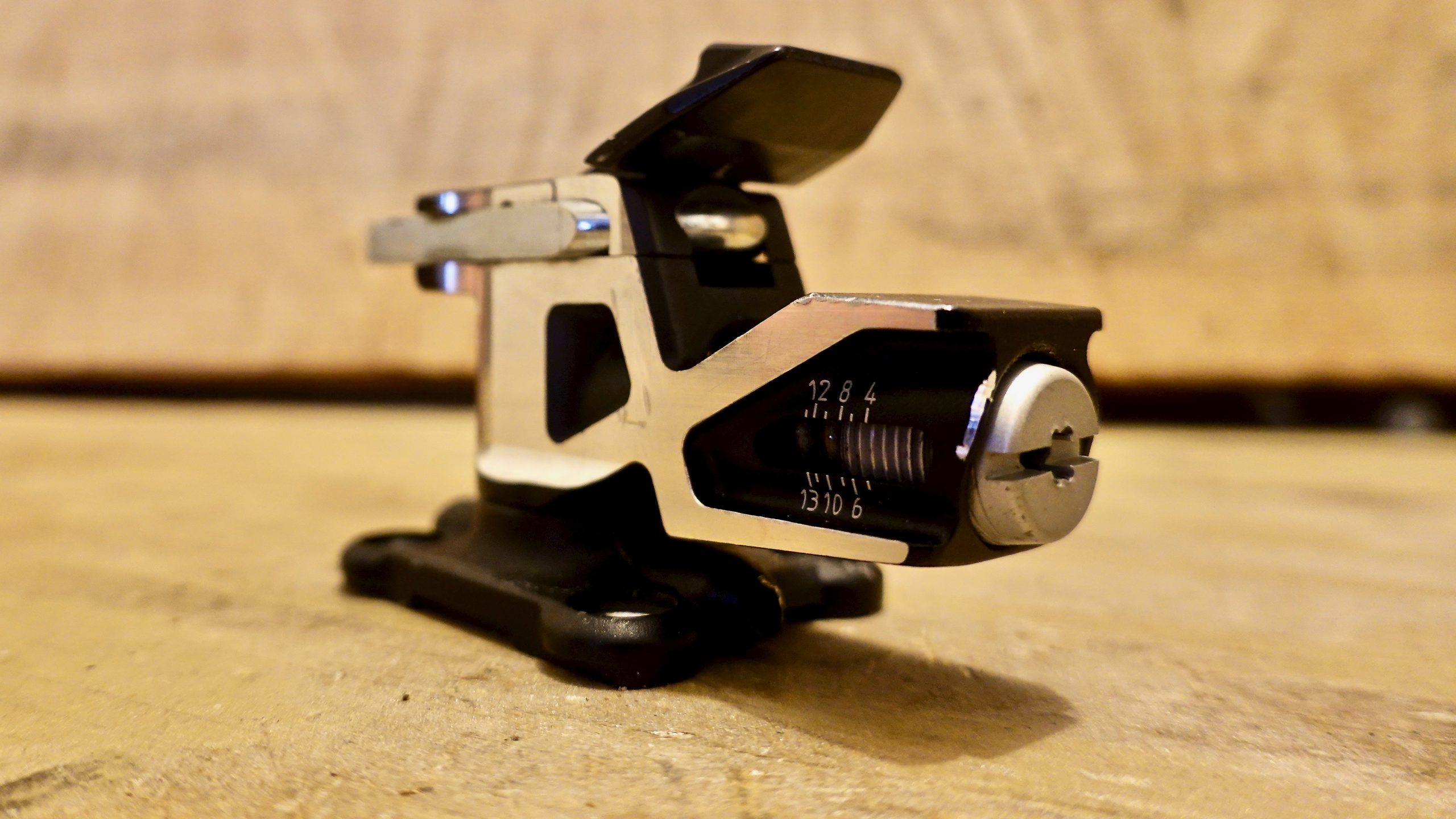
The sleek new SL150 heel unit. All aluminum housing with a giant 4-13 lateral release range.
What are you looking for in a ski touring binding? The pillars are retention, durability, weight, ease of use, and safe release — ranked in that order for myself. That order should vary based on the skier, terrain choices, and skiing style. In this 200 gram category, designers are working within a very narrow window to pack in the features. Let’s take a look at what the original purveyors of pin tech have coming out in 20/21.
Dynafit will release a new clamp into the wild next season — the Superlite 150, or third gen Superlite. Building on the platform of the 2.0 (reviewed here), they seem to have improved upon all pillars. The SL150 is lighter (150g without adjustment plate or brakes), mostly metal, has two additional dedicated riser heights, and is adjustable from 4 up to a whopping 13 lateral release. I skied them on a roughly 6k vertical ft day in variable spring snow and then took them apart in the garage for an internal inspection. First a bit on my experience with the current Superlite, and then a look at how the new ones stack up.
I have been a super-fan of the Superlite 2.0 12 — using it on the majority of my skis since it came out. Dynafit packed a heck of a lot of power into the compact high tech synthetic polymer heel unit. The low-medium and high-medium heel riser positions are perfect for my taste. You can rotate the 2.0 90 degrees for a somewhat effective flat position, though it tends to snap to forwards or rearwards over a longer period of time since it wasn’t designed to do so.
The main opportunity for improvement? The compact heel unit punched way above its weight class in terms of retention and power transmission and was paired with the less burly rando race toe. To be fair to Dynafit, I used the stock toe piece for a full year, in both hemispheres’ seasons, without issue. After watching several ski partners, and many other customers during my time as a ski tech, break or come out of their toe units, I decided to upgrade the toes.
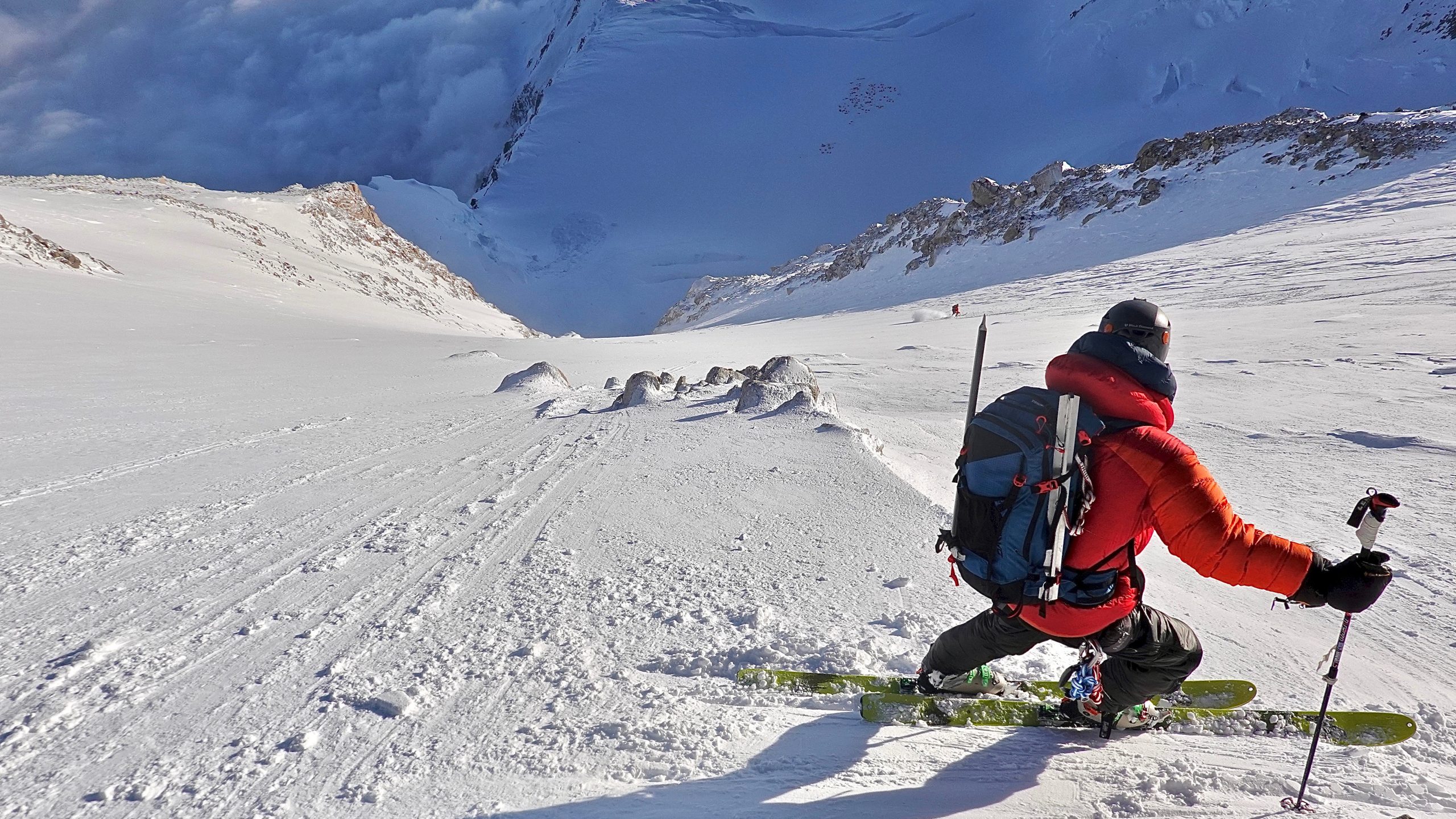
Drew Warkentin pictured here confidently awaiting his drop in Superlite 2.0 heels with Radical toes in the Messner Couloir, Denali, AK. A year prior, he came out of locked Superlite 2.0 toes while skinning up the frozen apron of the Fuhrer Finger Couloir, Mt Raineer, WA.
Luckily, the most time tested and well vetted tech toe piece ever, the Radical, is sold as an individual unit and uses the same mounting pattern. Thus the creation of the Dynafit Speed SuperRadical, my go-to ski mountaineering binding for a couple of years now. This is an expensive setup however, tacking on $80 per toe piece to the already $550 binding. Want an adjustment plate? Dang — you are at over $800 for an adjustable Speed SuperRadical.
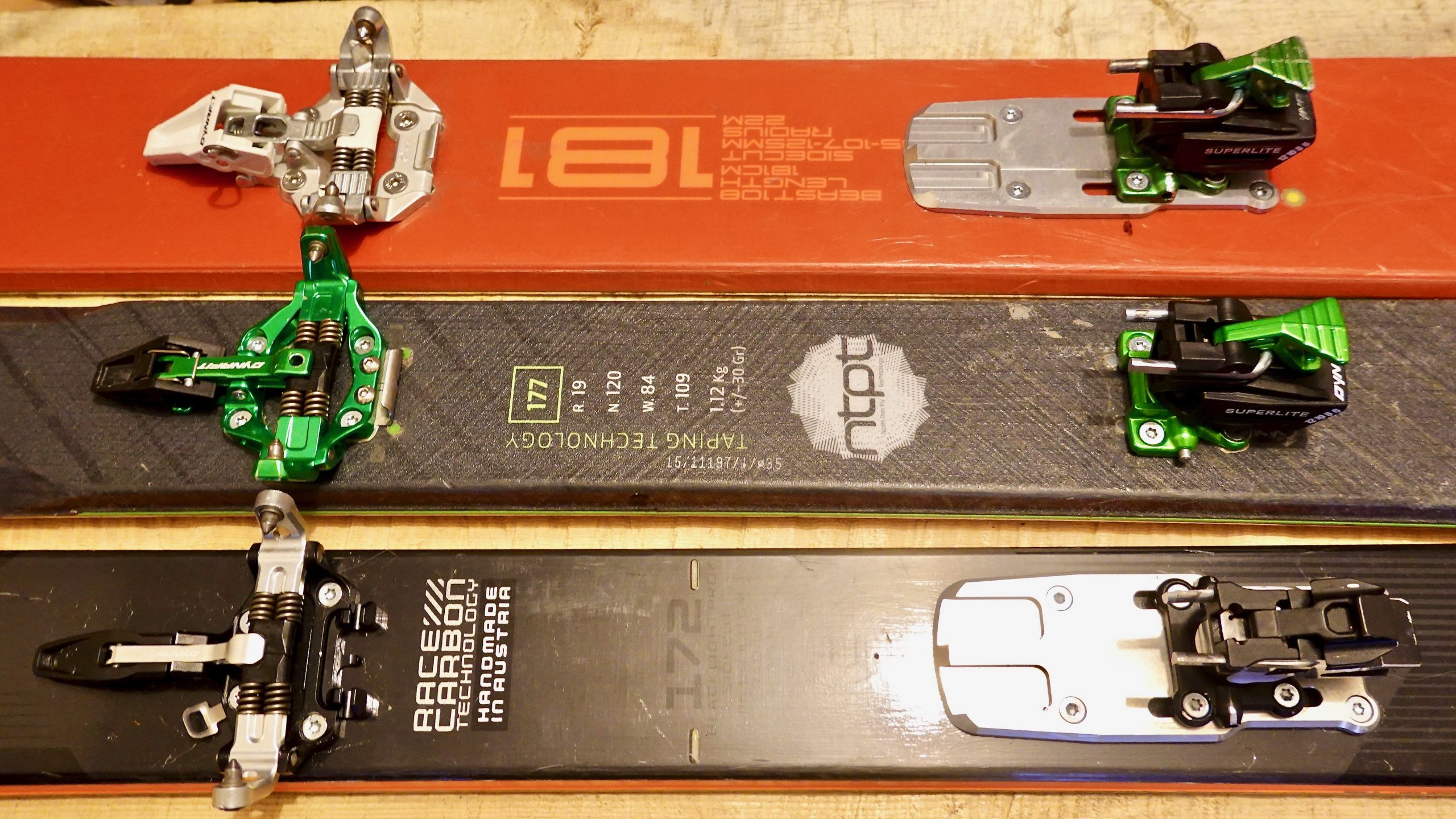
From top down- A ‘Speed SuperRadical’, Superlite 2.0, and the new Superlite 150
The new SL150 is a total revamp, let’s start with said toe piece. There were two particular problem spots in the old LTR/Superlite toe: cracking at the screw holes and poor locking and/or breakage of the minimal plastic lock lever. The bindings even included a suspect little shim to increase pressure between the lever and nub it locks against.
Dynafit engineers moved the new LTR/SL150’s front two screw holes 6mm inward and 12mm rearward (towards pin-line) and surrounded them in more aluminum, putting the most vulnerable holes in a more solid position. The rear holes then move outward 8.5mm for a 43mm wide rear screw platform as opposed to the old 30mm spacing. The SL150’s composite toe lever is now longer and easier to operate.
The heel unit is impressive in functionality and elegance. Monoblock CNC’d aluminum housing surrounds a 4-13 lateral release spring and threaded cap. The unit rotates around a monoblock tower and detents every 90 degrees where a composite wedge clunks into vertical grooves. Pins forward, you get ski position as well as the new ability to tour the binding in race style via a flap. Ninety degrees either way provides a flat skinning position. Pins rearward gives the skier the same low-medium and high-medium riser heights of the 2.0 (29mm and 49mm). I find that 29mm low-medium position to be incredibly versatile. Forward release is fixed at roughly 7 or 9 with two optional U springs — replacement requires a pair of splitter pliers.
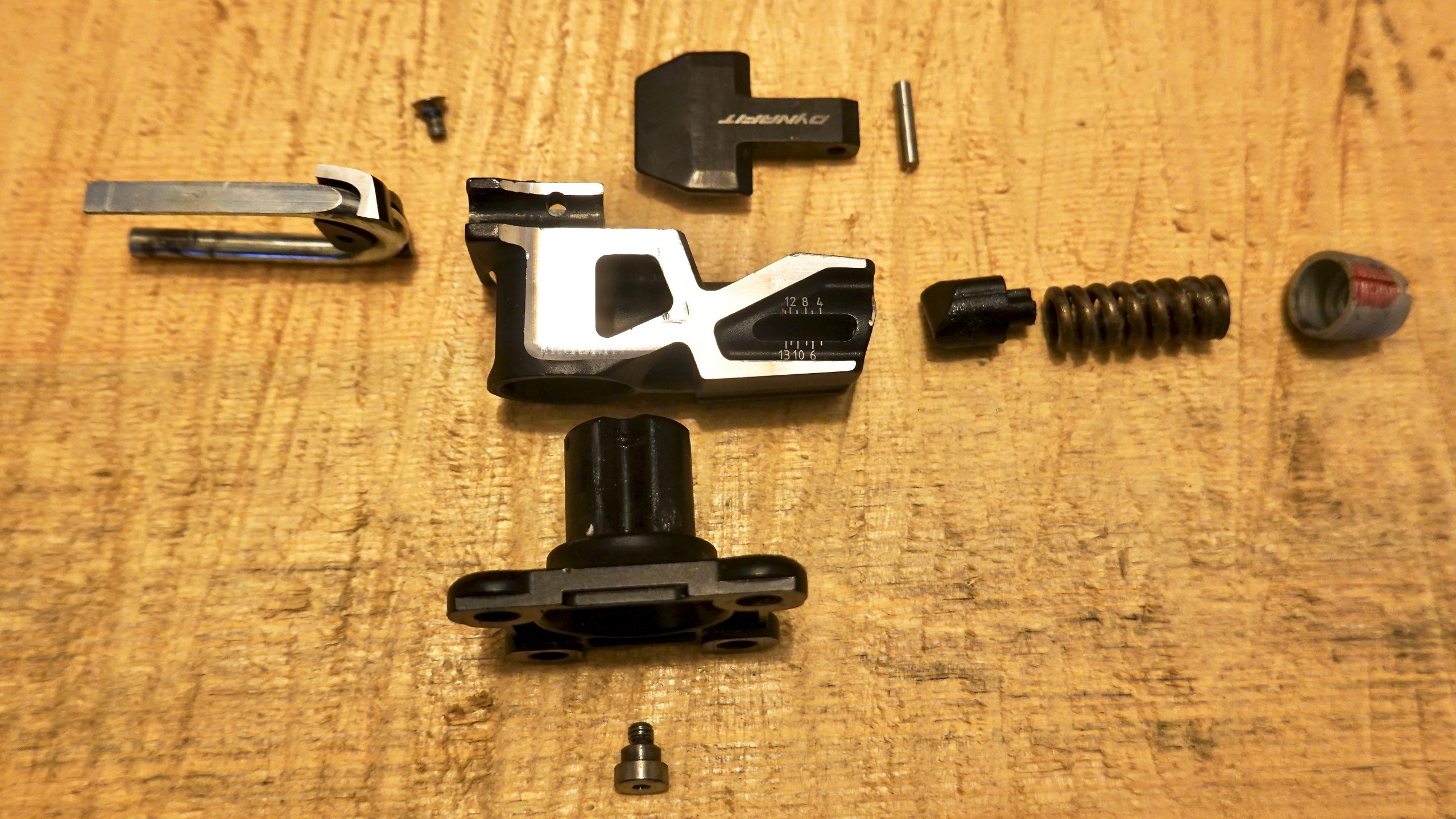
A fine and sturdy balance of simplicity and function. The only plastic part is the black piece pushed into the tower indentions by the spring to retain the various heel unit positions.
In the field, the SuperLite 150 is fantastic. The 80 cm long body is easy to grab and rotate. Race style (pins forward with flap, 41mm off the ski) is great for a lap track. Step in is easier than the old bear trap Superlite 2.0 12 RV springs, though that high forward release may be missed by some. Flat mode touring detents are a welcome addition in the ease of use category. The new toe lever is much easier to tug and release and has a very solid, positive feel when locked into the touring position. Front and rear pin heights remain the same, therefore no change in ramp angle. The low and compact heel skis very well as it did in the 2.0, noticeably better than taller binders in firm snow.
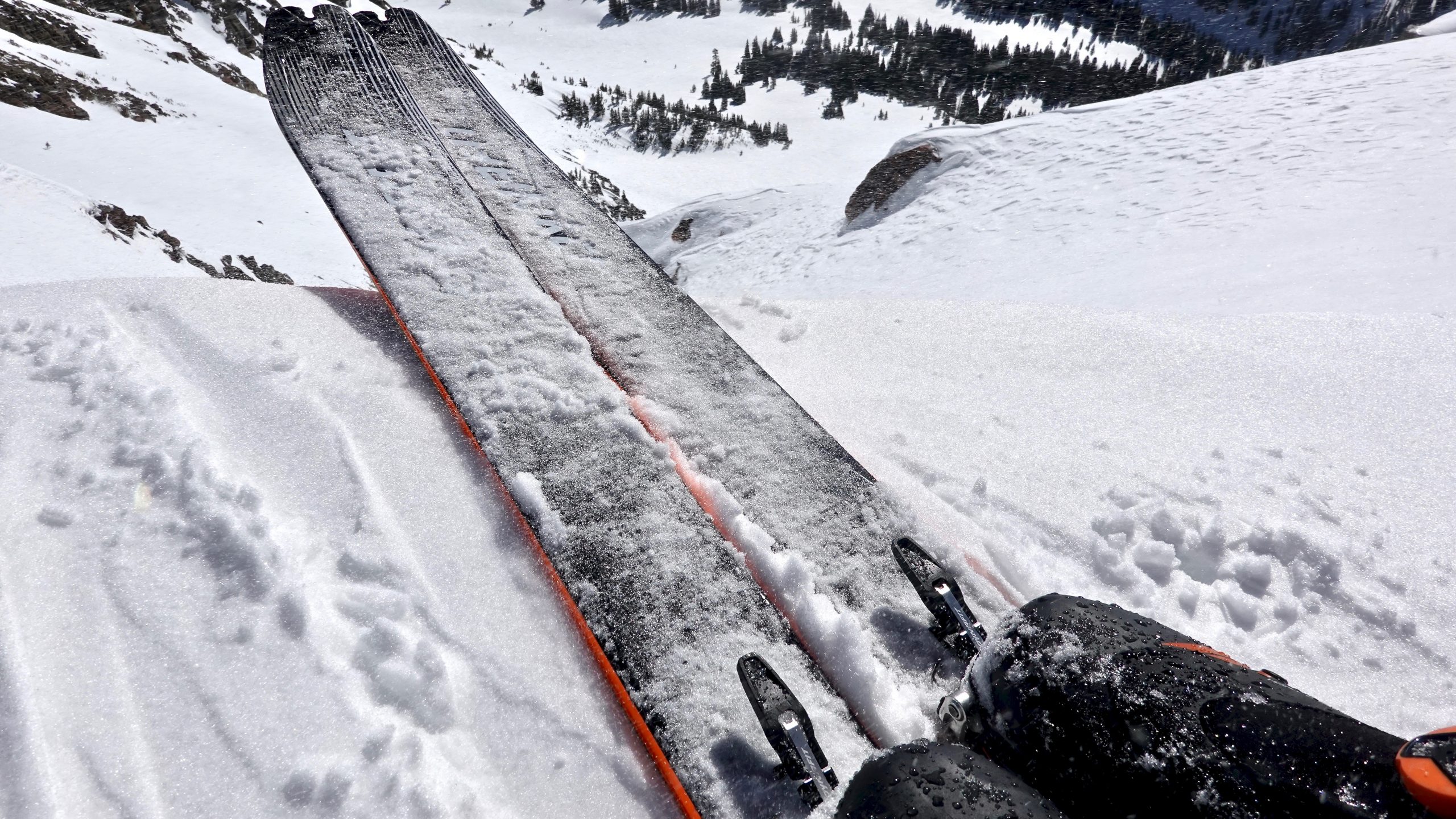
Faith in the new toe unit in steep terrain. The 172cm skis were another story for my taste.
For comparison’s sake with the Plum Oazo and Black Diamond Helio 200 (click on names for reviews), which both come with adjustment plates, the Superlite 150 with plate weighs 196g — right in line.
The heel screw pattern, optional brake, and their effects on the adjustment plate are my only gripes with the SL150 design. The heel unit’s offset hole pattern fore and aft remains the same, necessitating a plate with four tracks in it, making for either less range or a longer plate. Since the new tower was redesigned for the detention grooves, the hole pattern could have presumably been made symmetrical as well. Furthermore, the long adjustment plate is made even longer to accommodate a brake.
Adding the brake on this sleek little machine is a real shame. It eliminates both flat and race touring positions, adds weight, and is a fussy mess at transitions. I understand the value of brakes in various scenarios for many folks, but this race plus class is best served brakeless. Simpler (and cheaper) braked systems exist in the next weight class up.
Aggressive skiers have been pushing around big planks on the Superlite 2.0 for years, and there’s no reason they won’t on the new Superlite 150. The lightest of skiers or novices may be leery of the minimum 7 forward release. Toe durability will be the biggest thing we watch next season when we are able to do a long term test. The new hole pattern means that we can’t rely on the old faithful Radical toe as a bail out. Barring unforeseen issues, I see the Superlite 150 as a top-in-class binding for skiers who enjoy big days or simply lightweight touring, and am excited to run it on my skis next season.
The Superlite 150 will be available to purchase in Fall 2020.
On March 22nd 2021, Gary Smith tragically died in an avalanche outside of Beaver Creek Resort in Colorado. Since 2018, Gary has been a frequent and insightful contributor to WildSnow. From Christmas Eve spent at the Wildsnow Field HQ cabin, to testing gear and sharing his love for steep skiing around the world, he was a pillar of the ski touring community and will be greatly missed.
